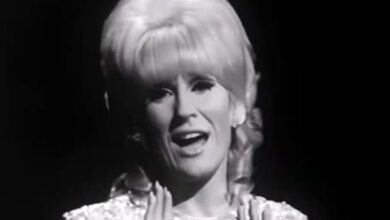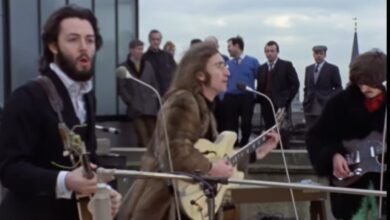Aretha Franklin’s Unforgettable “Nessun Dorma” Triumph at the Grammy Awards
Aretha Franklin’s name is synonymous with soul, gospel, and R&B, yet in 1998 she stunned the world by proving her artistry knew no boundaries. At the Grammy Awards in New York City, she delivered a breathtaking performance of Puccini’s opera aria “Nessun dorma.” This wasn’t planned—it happened because Luciano Pavarotti, a close friend and the evening’s featured performer, suddenly fell ill and could not appear. Without hesitation, Franklin stepped in and transformed what could have been a setback into one of the most unforgettable moments in Grammy history.
Pavarotti, celebrated as one of the greatest tenors of all time, had made “Nessun dorma” famous on a global scale when he sang it during the 1990 FIFA World Cup. The aria became his signature piece, admired for its intensity and emotional weight. But when he had to cancel his highly anticipated Grammy appearance at the last minute, producers faced a crisis. They turned to Franklin, who had already impressed audiences at a MusiCares dinner earlier that week with her unmatched vocal power and artistry.
With almost no time to rehearse and an orchestra that had been preparing to accompany a tenor, Franklin approached the aria with courage and conviction. “Nessun dorma” is a piece that challenges even the most seasoned opera singers, demanding precision, control, and the ability to sustain soaring high notes. Franklin, without formal operatic training, brought her own interpretation to the stage, infusing the aria with her soulful phrasing and natural brilliance, turning a classical piece into something deeply personal and undeniably powerful.
Her ability to hit the demanding notes, including the climactic top B that crowns the aria, astonished those who doubted she could bridge such a wide stylistic gap. The audience, fully aware of the monumental task she had undertaken, watched in awe as Franklin delivered each line with intensity and grace. This performance was more than just a substitution—it became an affirmation of Franklin’s versatility and her ability to thrive in any musical arena she entered.
The performance was introduced by Sting, who set the stage for what would become a truly historic moment. As Franklin’s voice soared through the hall, the audience rose to its feet, offering her a thunderous ovation. It was not only a tribute to Pavarotti, who received the Grammy Living Legend Award in absentia, but also a celebration of Franklin herself—an artist whose reach extended far beyond her established genres. That night, her rendition reached an estimated one billion viewers across the globe, cementing its place in cultural memory.
Those who witnessed it live describe the atmosphere as electric, a mix of disbelief and admiration that a soul singer could command an operatic masterpiece with such authority. The orchestra adapted around her phrasing, and Franklin’s ability to control both the dramatic intensity and the tender subtleties of the aria showed just how instinctive her musicality was. In that instant, she proved that the language of true artistry transcends categories, whether classical, gospel, or soul.
For many, this moment highlighted not only Franklin’s raw talent but also her unshakable confidence. Opera aficionados knew the difficulty of “Nessun dorma,” yet Franklin’s interpretation carried a unique blend of strength and warmth that made the aria accessible to listeners outside the classical tradition. It was as if she had bridged two musical worlds, proving that her voice could illuminate any stage, regardless of the genre it came from.
What made the evening even more extraordinary was how Franklin continued her relationship with the aria afterward. She eventually recorded “Nessun dorma” in the studio, adding her own soulful signature to a piece that had been dominated by operatic voices for decades. Her live performances of the aria became a rare and treasured addition to her concerts, further showcasing her boundless adaptability and her fearlessness in exploring new musical territories.
Her final major performance of the aria came years later, in 2015, when she sang “Nessun dorma” before Pope Francis at the World Meeting of Families in Philadelphia. By then, her voice carried even deeper resonance, embodying a lifetime of musical triumphs and spiritual strength. That performance, like the one at the Grammys, was met with reverence and admiration, affirming her ability to inspire across audiences, faiths, and cultures. It remains a testament to her extraordinary legacy as an artist who could not be confined by boundaries.
In retrospect, Aretha Franklin’s interpretation of “Nessun dorma” stands as one of the most daring and triumphant chapters in her career. She stepped into a moment of uncertainty and transformed it into an unforgettable triumph, reminding the world why she was, and always will be, the Queen of Soul. It wasn’t just an aria performed—it was a declaration of her unmatched gift, a moment that revealed the essence of her artistry: fearless, passionate, and universally resonant.





